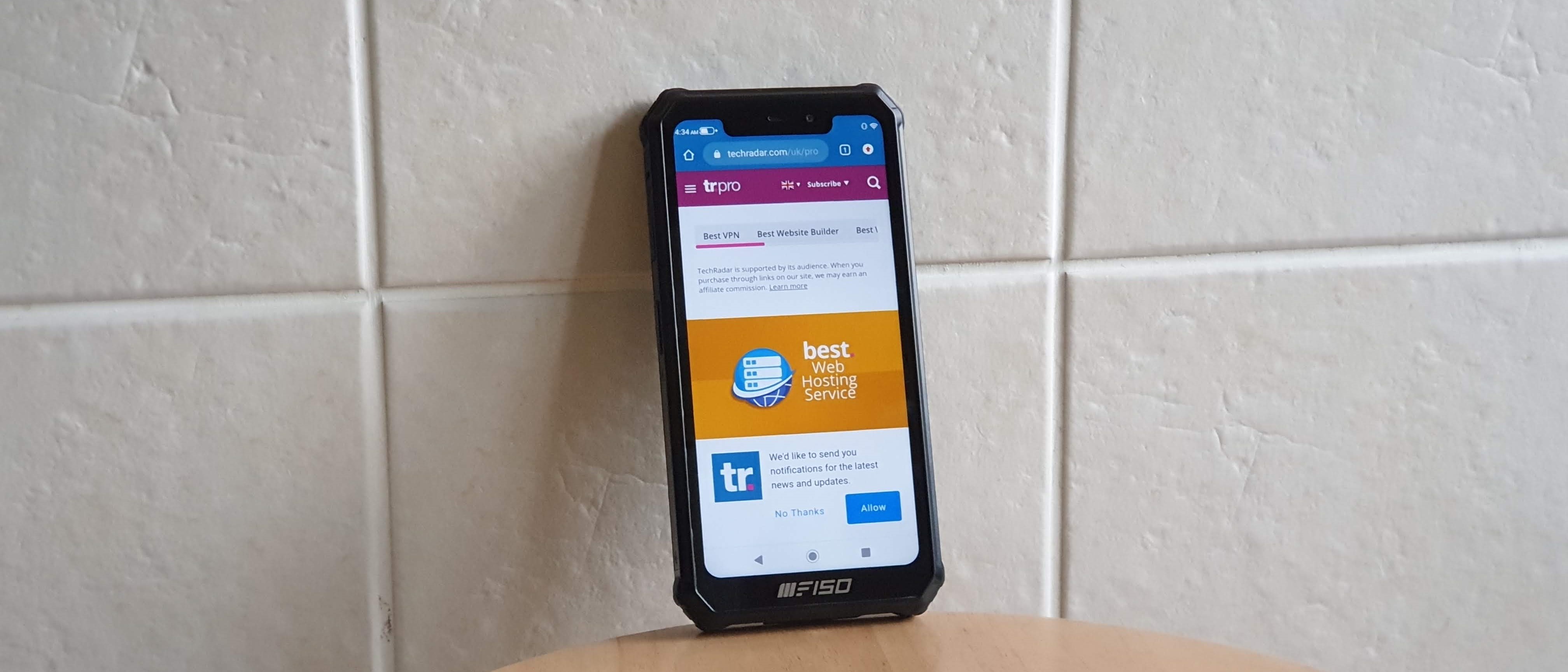TechRadar Verdict
For a first incursion in the world of rugged smartphones, F150 and its B2021 have produced a good handset with a low price tag and a big battery. That’s marred by the many questionable choices that we urge them to reconsider for the next iteration.
Pros
- +
Surprisingly affordable
- +
6GB RAM
- +
Android 10
- +
3.5-mm headphone socket
- +
Big battery
Cons
- -
Bland design
- -
Poor overall performance
- -
The UI is meh
- -
No notification lights
Why you can trust TechRadar
The beginning of 2021 sees the arrival of a new brand called F150 which pitches itself as an up-and-coming startup with some serious aspirations in the congested rugged smartphone market. It is in fact an offshoot of another well known durable mobile specialist, Oukitel. F150’s first product is called the B2021 which is an entry level model that tries to punch above its weight with some surprising feature selection. But is it enough given its lack of marketing clout and other better known rivals?
Pricing and availability
Chinese online retailer Banggood sells the F150 B2021 for a mere $119.99 at the time of writing, a 40% saving off its $199.99 suggested retail price. The device is available in black and gold.
- Want to buy tech from online Chinese retailers? Read this first.
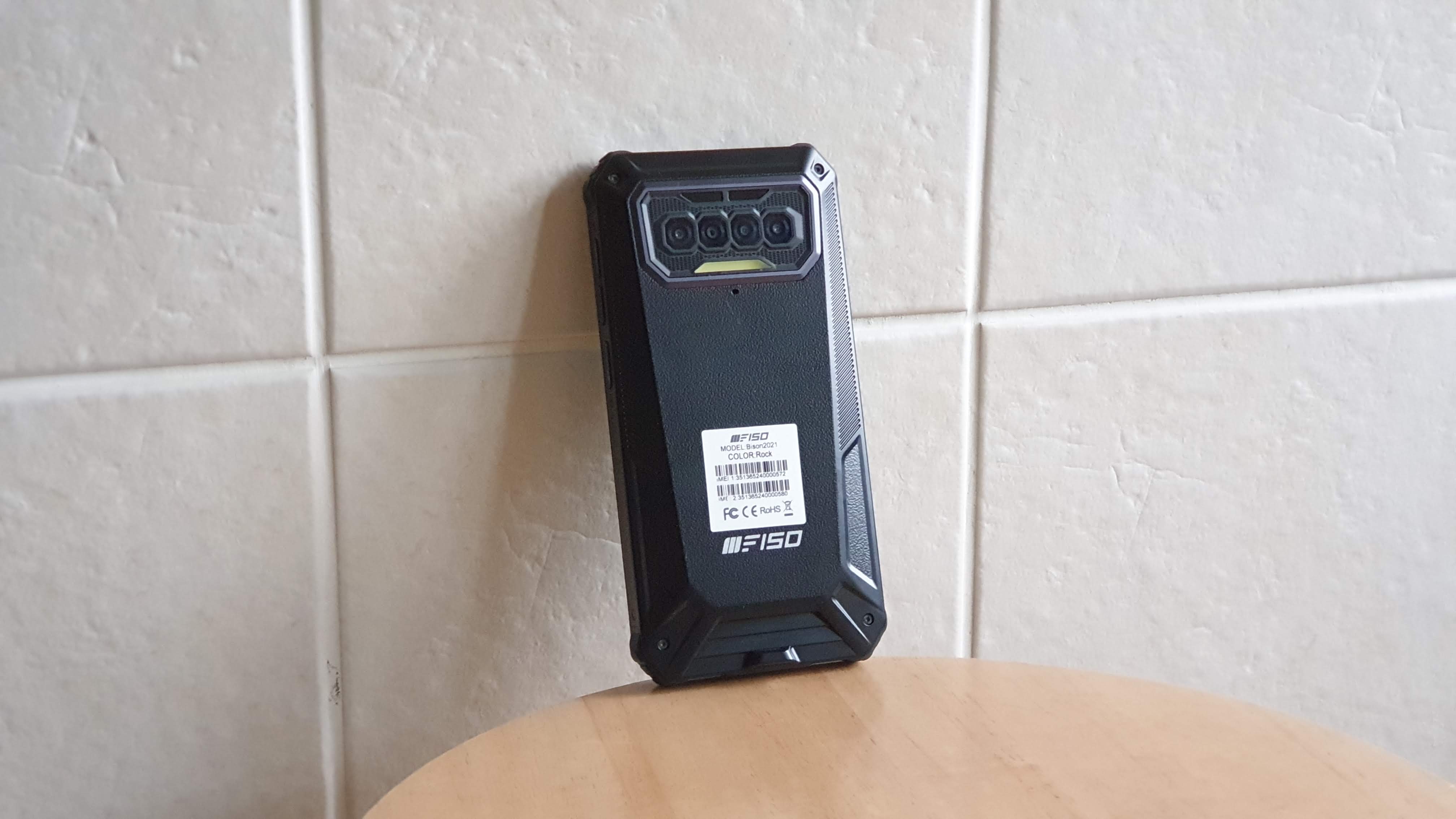
Design
We’re not a big fan of the design, not a fan at all. The B2021 takes the brashness and industrial look usually associated with rugged smartphones and dials it up to 1000%. It feels like a lump of cold metal with plenty of screws, rubber corner shock absorbers and an island at the back that houses no fewer than four camera sensors and an LED bar. The F150 branding is present in the front AND at the back, a far cry from Blackview’s more subtle branding.
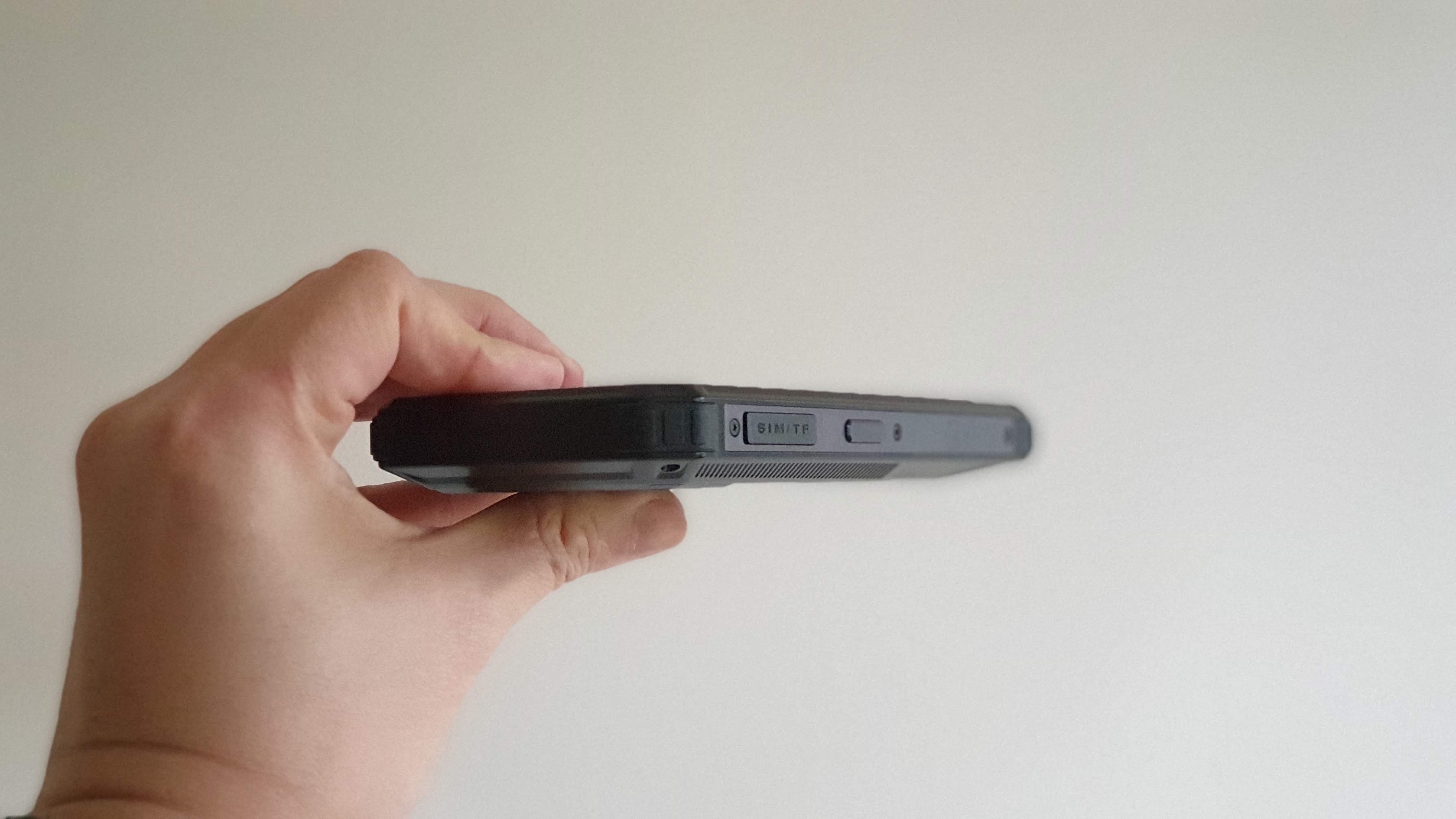
Its size (158 x 78 x 18mm) and weight (315g) mean that it is a chunky piece of technology that will not appeal to everyone. The polycarbonate textured back and the large notch on the front screen are two of the more flagrantly dubious design choices.
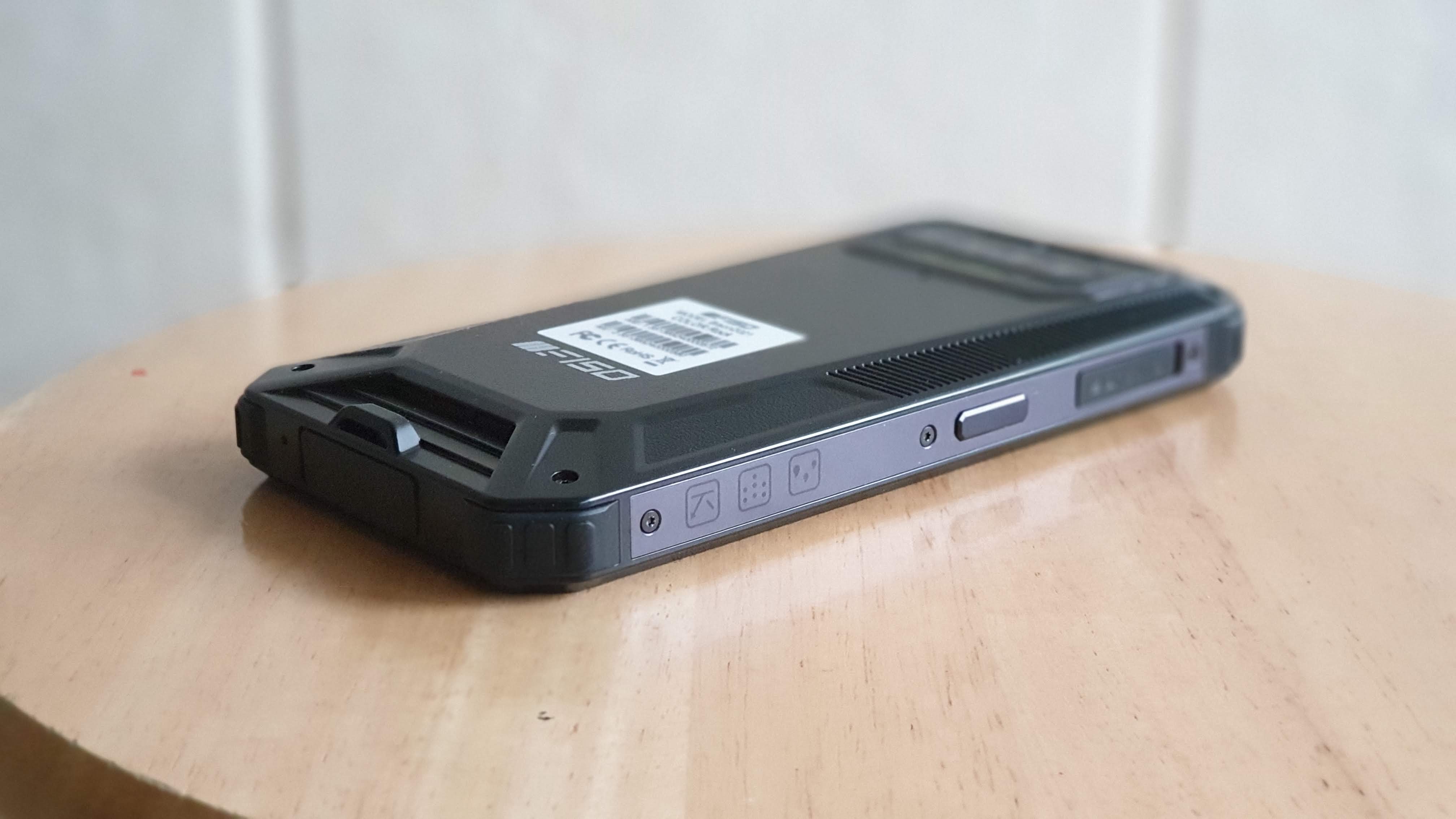
Next to a dedicated feature button, there’s a SIM/memory card tray on one side, hidden by a rubber flap.
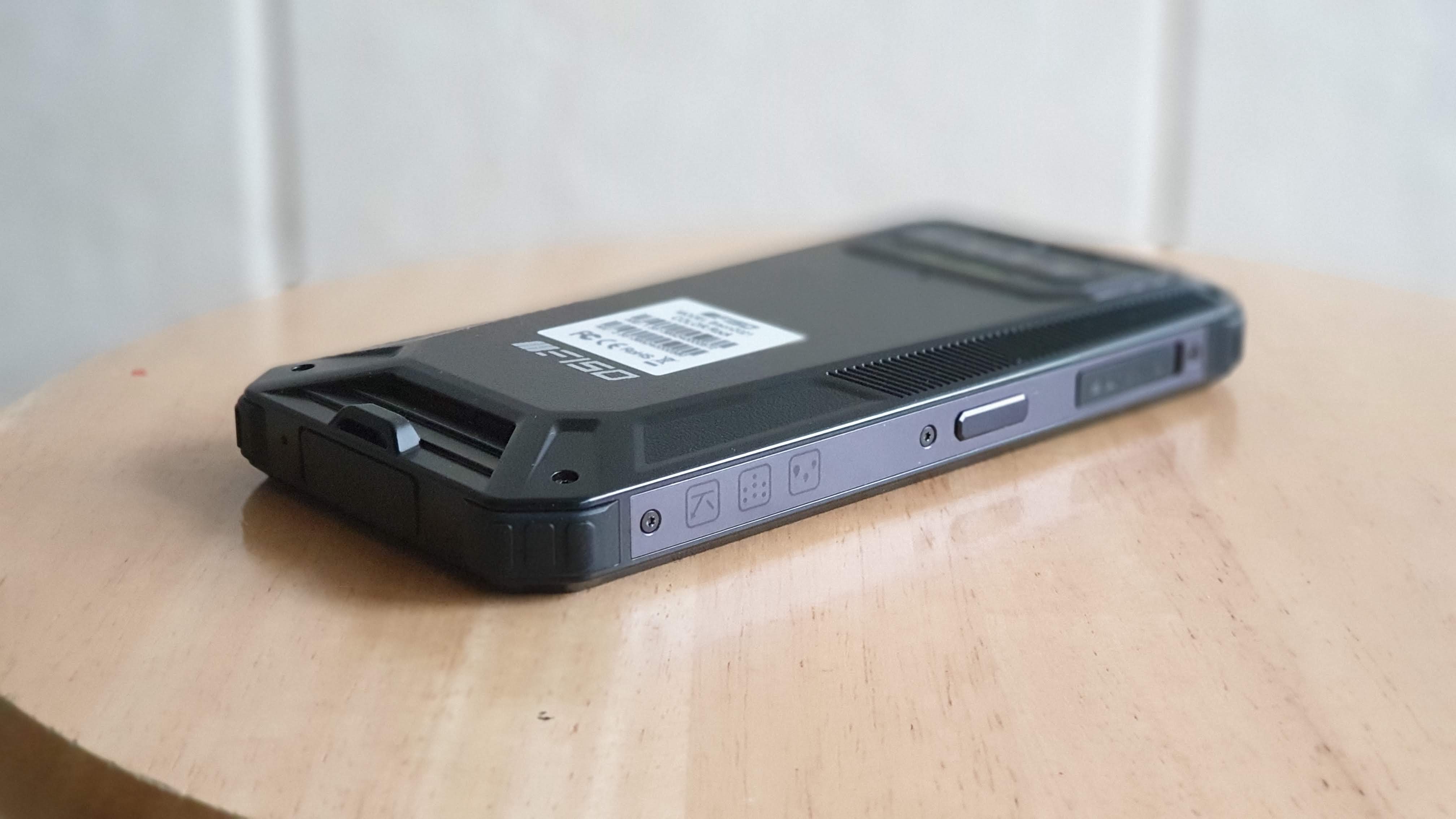
On the other side of the device is a volume rocker, the power button and a fingerprint sensor. On the bottom edge is located a loop to secure a string as well as another flap behind which one can find a USB-C port and a 3.5-inch audio connector.
As for all rugged smartphones worthy of the label, this one comes with IP68, IP69K and MIL-STD-810G certification.
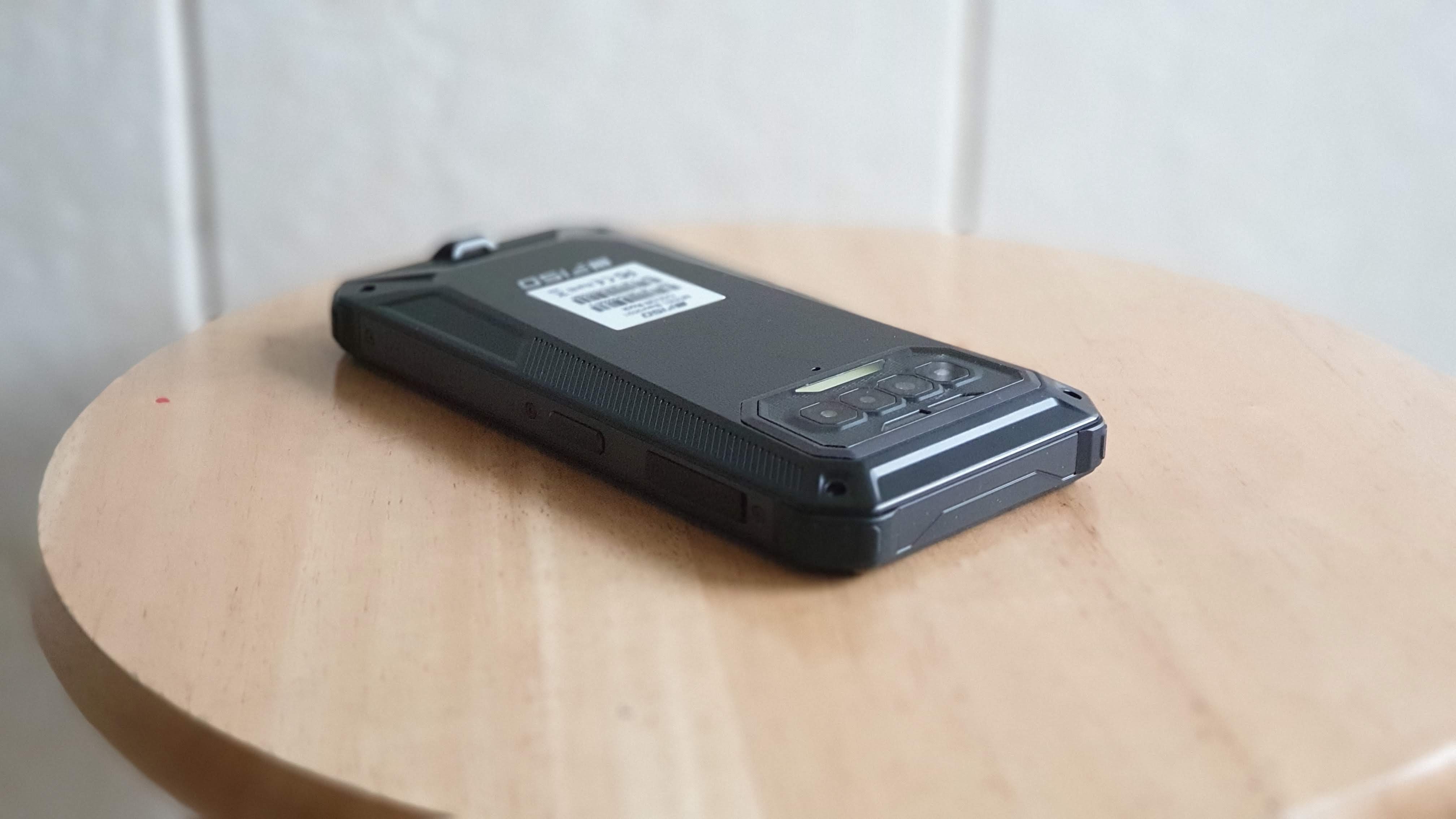
Hardware
The F150 B2021 that was shipped to us came with the following hardware:
CPU: Helio G25
GPU: PowerVR GE8320
RAM: 6GB
Storage: 64GB
Screen size: 5.9-inch
Resolution: 1520x720
Weight: 315g
Dimensions: 158 x 78 x 18mm
Rear camera: 13MP, 2MP, 2MP, 0.3MP
Front camera: 8MP
OS: Android 10
Battery: 8000mAh
F150 made no secret of the entry level aspirations of the B2021 but still managed to add a few surprises along the way. It uses a Mediatek Helio G25 system on chip, which pairs eight Arm cores with a PowerVR GPU cluster. There’s 6GB of RAM and 64GB onboard storage with a microSD card to increase it if needed.
This 4G smartphone also has a 5.86-inch IPS display with a low resolution of 1520 x 720 pixels and a rated brightness of 400 nits. There’s nothing wrong with this screen resolution if you know what you’re looking for. Such a panel saves on costs and will consume less power but a lower pixel density means you’ll get slightly fuzzier edges when you’d expect a razor sharp corner.
The B2021 comes with a 8000mAh battery fed by a 10W charger, Wi-Fi 5, Bluetooth 5, Corning Gorilla 5, NFC but no notification lights. The main camera sensors are courtesy of Samsung and the low pixel count indicates that the B2021 should do OK in daylight but struggle in night mode.
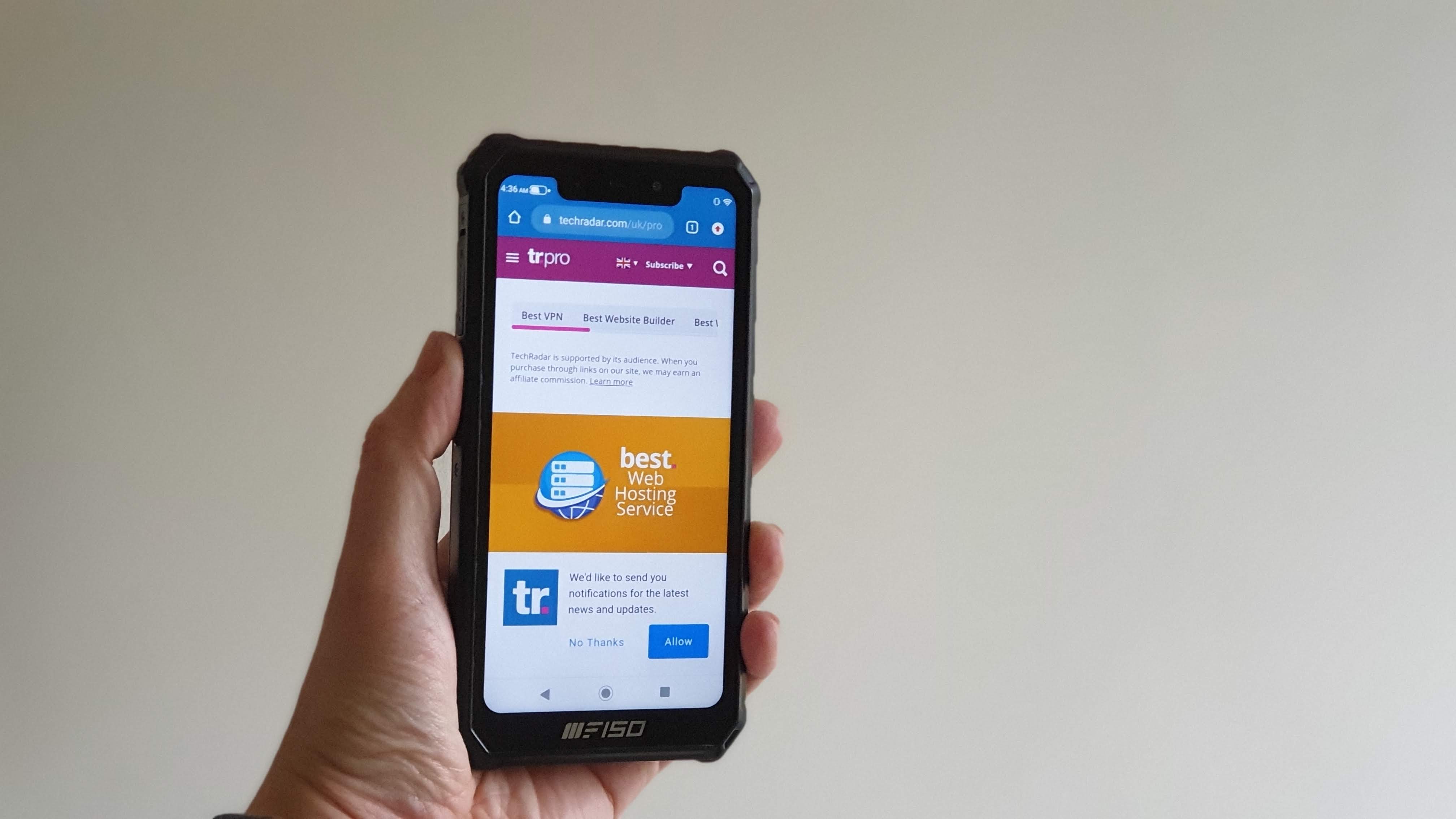
Performance and in use
The F150 B2021 runs on a stock version of Android 10 but you can also run what F150 calls an “advanced and optimized OS with a great UI, Neo Software”. We call it one of the worst Android 10 user interfaces we’ve seen in recent times and thanks God it is entirely optional. Other than a couple of apps (system manager and the usual bunch of DIY software bundle in the “toolbag” (compass, protractor, voice simulation - that ain’t one, plumb line and sound meter), what’s remarkable is the absence of the customary Mediatek features (e.g. Duraspeed) which is a shame.
This is how the F150 B2021 performed in our suite of benchmark tests:
Geekbench: 138 (Single); 823 (Multi)
PCMark (Work 2.0): 5327
Passmark: 3802
Passmark CPU: 10775
Androbench (sequential): 292 (sequential read); 207(sequential write)
Androbench (random): 35 (random read); 18 (random write)
3DMark SS Extreme: 436
LinPack MFLOPS: 337
As for performance, it is as expected on par with entry level smartphones. There’s really no other way to put it; you are paying what you pay for; the G25 is a budget 8-core processor and behaves like one. The fact that it is relatively recent (less than one year old) and uses a small 12nm process means that it should be power efficient.
The rest of the test numbers show that its graphics subsystem will struggle with heavy usage scenarios while the storage subsystem delivers the sort of data that is indicative of the presence of inferior eMMC components. Not a surprise at all as F150 engineers have a bill of materials to stick to.
The competition
While the B2021 surprises with its aggressive starting price, there’s at least one rival that will give it a run for its money. The Doogee S58 Pro is slightly more expensive, doesn’t have the huge 8mAh battery or the quad-camera setup at the back. But it does have a better design and both its front and main rear camera sensors have much higher pixel counts, which should translate into better picture quality.
If you can afford an extra tenner, the wonderful Ulefone Armor 8 is a very solid alternative, swapping the processor for a far more capable Helio P60 system-on-chip with a reduction in system memory and battery capacity. That’s a perfectly acceptable compromise especially as you also get a faster battery charger.
Final verdict
Other than the flawed design - which we agree is an entirely subjective point of view - we’d prefer to have less memory and more onboard storage. A 4GB/128GB combination might have been preferable or, like the Armor 8, dial down the memory and dial up the processor. 6GB is a bit overkill for all intents and purposes.
Whatever aims they pursued with the Neo branding is nothing more than a spectacular confusion. We don’t understand what it brings to the customer and why it was there in the first place. This doesn’t mean that the B2021 doesn’t deserve any cookie points.
At $120 it is the cheapest 6GB device on the market; laptop, smartphone or tablet. And that is a credit to its manufacturer. We love the fact that it has a big 8000mAh battery which could make it ideal for some niche use cases.
- We've also highlighted the best rugged smartphones

Désiré has been musing and writing about technology during a career spanning four decades. He dabbled in website builders and web hosting when DHTML and frames were in vogue and started narrating about the impact of technology on society just before the start of the Y2K hysteria at the turn of the last millennium.
